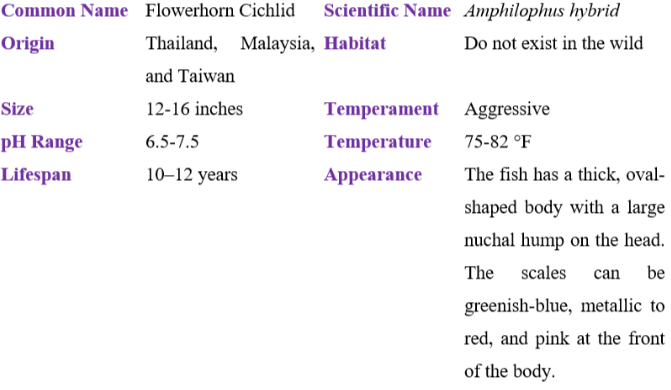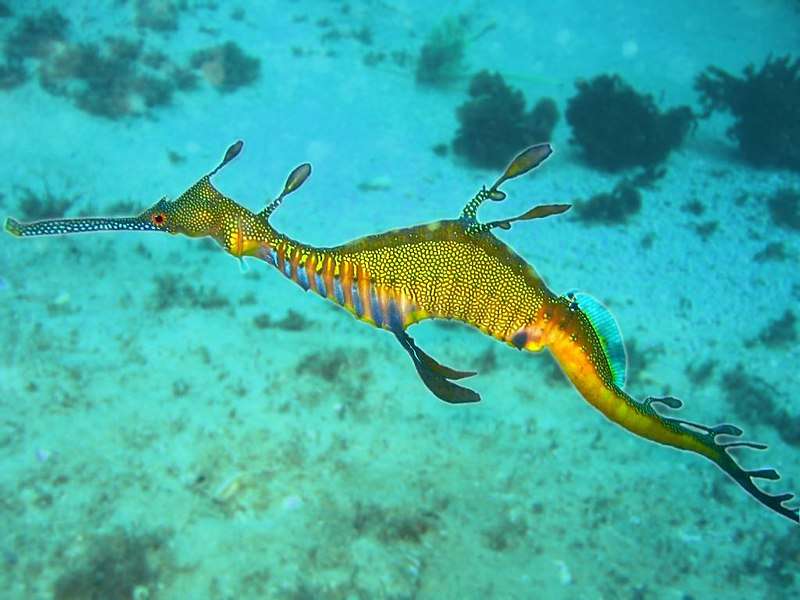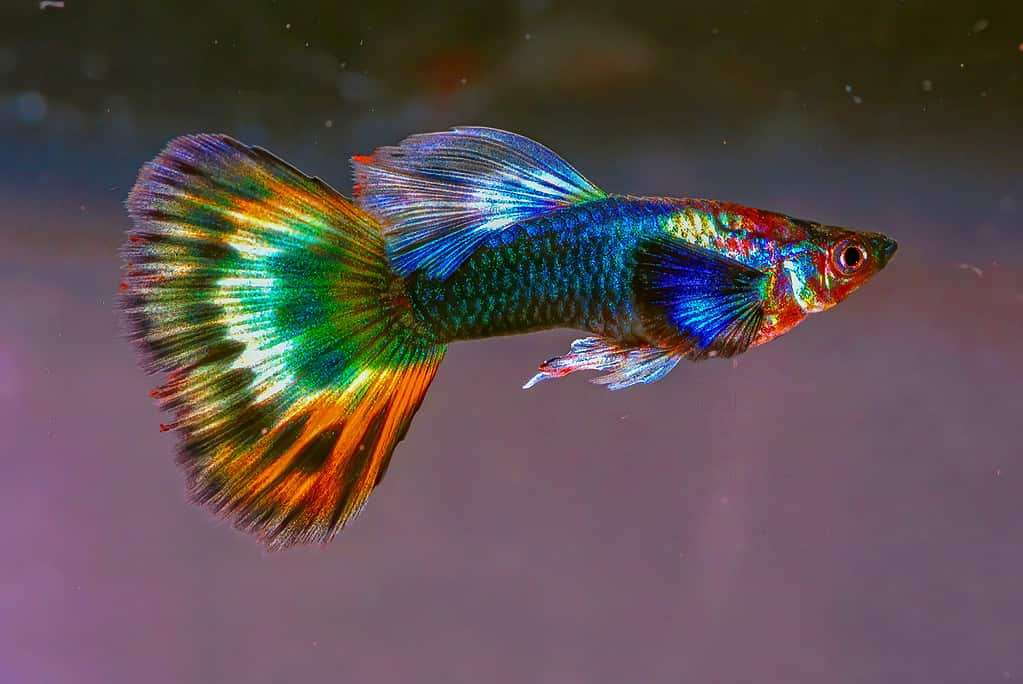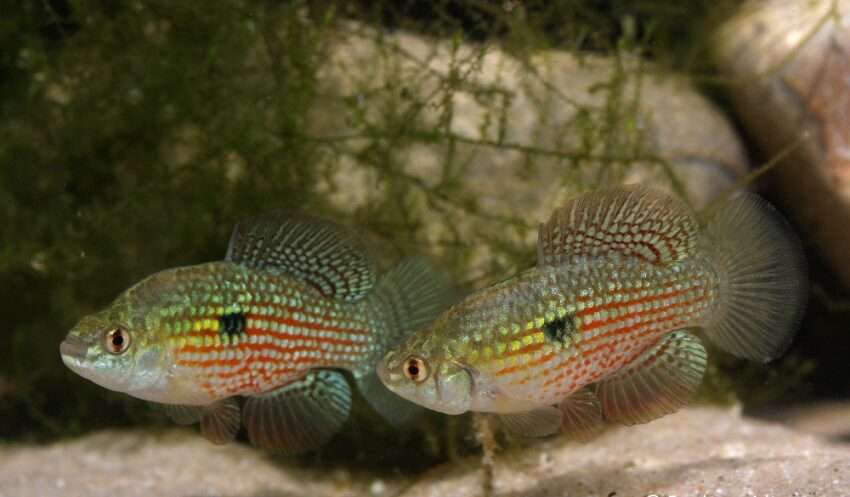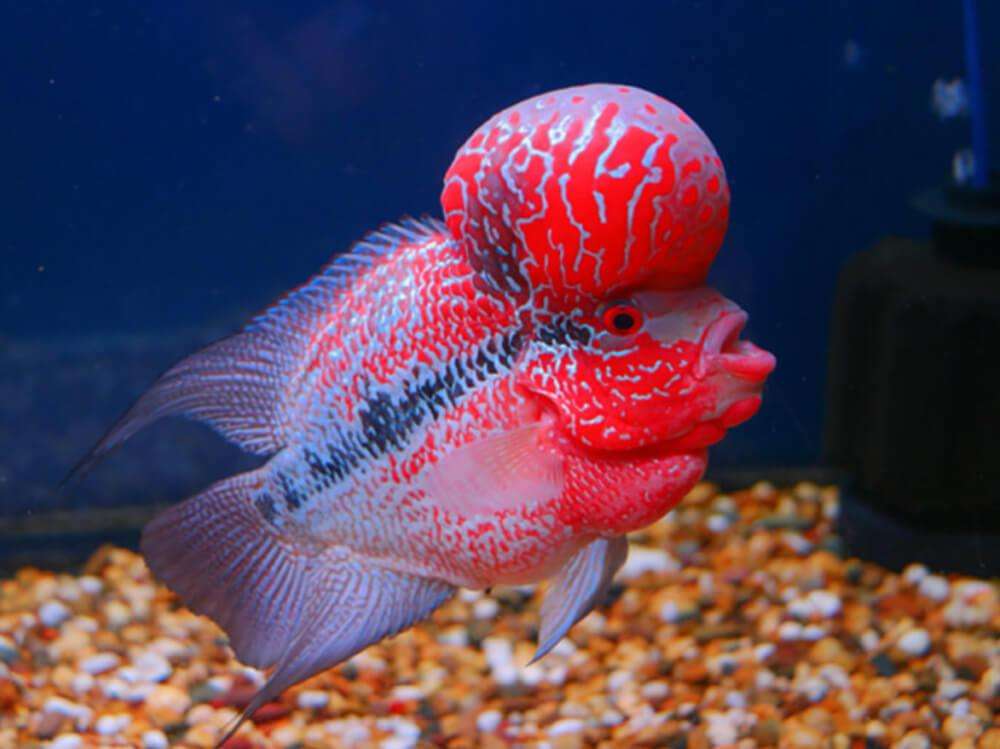
Size
12-16 inches
Physical Characteristics
The protruding head development of flowerhorns is one of its most noticeable and distinguishing characteristics. The kok, commonly referred to as the nuchal hump, is especially noticeable in males. Genetics and aquarium maintenance will have a significant impact on the overall size and buoyancy of this hump.
Their vivid and bright colorations are the second most distinguishing characteristic. The nicest thing about them is that no two fish will ever have the exact same appearance. They come in a range of colors, from red to blue and from gold to green.
Temperament
The Flowerhorn Cichlids are known for being highly combative. They do poorly in fish community aquariums because of this. Fights are likely to occur frequently if you maintain these fish alongside other species. Their aggressive disposition will frequently result in fighting even when maintained in tanks with other animals of their kind.
It’s ironic that Flowerhorns like to swim in pairs. The hostility and stress levels in the aquarium will frequently decrease if a male and female are kept together in the tank. If you plan carefully, you might be able to add a few tankmates for your Flowerhorns. Usually, it makes sense to keep them with calm fish of a similar size.
Also, these cichlids won’t confine themselves to one layer of the tank. Your fish will likely bob up and down in the water column as they like. In the aquarium, they will also stake out territories, which may spark conflict. Because of this, it’s crucial to leave adequate room in the tank if you intend to have more than one Flowerhorn Cichlid there.
Habitat
In Malaysia’s aquarium market in the late 1990s, flowerhorns first appeared for sale, and they quickly gained popularity across several Asian nations. In the US, China, and Europe, enthusiasts frequently keep them. Many abandoned flowerhorns have been released into the environment, mainly in Malaysia and Singapore, where they have established themselves as invasive pests.
Keeping as Pet
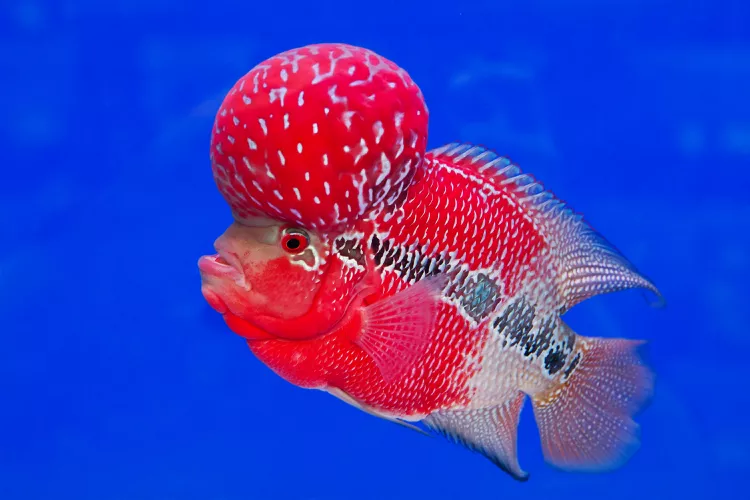
- Tank Size
With this fish, you will need a fairly sizable aquarium. 75 gallons (284 litres) is the absolute least that I would recommend for a single fish. A 150 gallon (568 litre) tank would be ideal for keeping a pair. Moreover, flowerhorn fish are quite active and produce a lot of trash. They require the larger water volume to ensure that their excrement is sufficiently dilute between water changes so as to not negatively impact water quality. It’s also wonderful that they have plenty of area to move around.
- Water Parameters
Water temperature: 24° to 28°C (75° to 82°F).
0 ppm ammonia/nitrite
30 ppm of nitrate
pH: 6.5-7.5
GH: 8-12 dGH
KH: 3-12 dKH
- Feeding
Being omnivores, flowerhorns will happily eat anything that would fit in their jaws. It is best to give them a varied diet consisting of premium products. Fish receive all the nutrients they require by being fed a range of foods.
They strongly advise feeding them Omega One pellets as a staple diet. In my opinion, Omega One is one of the top manufacturers of fish food. Foods that are frozen, such as whole shrimp and tilapia, can be added to this.
- Tank mates
Finding suitable tank mates for them might be challenging due to their aggressive behavior. Due to their size and perception of the tank as their only property, they avoid sharing it with other fish. It is best to leave these fish alone because they appear to be content with their current situation. Yet, if you insist on having a pet companion, you should be selective in your selection. The best and worst tank mates for the flowerhorn cichlid are given here.
Some fish complement flowerhorn well:
- Oscar fish
- Silver Arowana
- Bichir, the bigger you bring, the better.
- Bristelonose plecos
- Spotted hoplo catfish
Table
